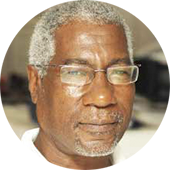
In ‘The Godfather’ that role went to Don Vito Corleone (Marlon Brando) and Al Pacino played the role as Tony Montana in ‘Scarface’ – both box-office-breakers putting crime on a more admirable and acceptable pedestal internationally than ever, because of the ways the stories are told and presented, idolizing criminal characters and presenting murder as an acceptable part of gangland life that can be more than worth the risk.
The Godfather (1972) and Scarface (1983) sufficiently well-perfumed gangsterism as to make it admirable-enough to be adopted and adapted by individuals leading small community gangs in their bids to graduate in gangland popularity, respect by rivals and instill fear in neighborhoods.
The Caribbean equivalents were first known in Jamaica, where anyone better than most at anything was/is described as a ‘Don’, including the island’s top musical dancehall reggae music performers.
But even musical Dons end-up living and dying as gangster victims, including Bob Marley (shot and badly wounded in 1980), Peter Tosh (shot dead in 1987) and South Africa’s Lucky Dube (killed in 2007) — or Ninjaman, the Jamaican dancehall artiste and actor sometimes called “Don Gorgon”, known for his pro-gun lyrics, sentenced to jail for life in 2017 for murder.
The Jamaican slang for the Big Boss or Kingpin is also used as a compliment or expression of admiration, out of respect for one’s talents, like being “the best of the best…”
A ‘Don Gorgon’, therefore – no matter where – is seen and treated as one who is to be either feared or respected.
These localized versions of fictional male mafia bosses — also referred to by Caribbean admirers and beneficiaries as “the man that runs things” are usually described as “well-respected persons” by persons who know better — including in the press, where their negative images are usually partly laundered by portrayal of their supposed “good deeds”.
In every Caribbean Community (CARICOM) member-state (and indeed every country worldwide) there are always local ‘Dons’ aiming (and trying hard, even dying trying) to be a ‘Capo’.
But while some of their bad (and good) deeds may be known by those with reason to (be they police, relatives or foot-soldiers), it’s only after the Don is arrested and jailed for long terms, including life – or after they also die by the gun – that the stories start flowing from now-open mouths about those aspects of their lives known to many, but spoken by none.
Most (if not all) Dons killed by rivals in clear but hard-to-detect acts would have instilled different degrees of fear in their native or adopted neighborhood communities, which they treated as “turf” — and where they classified (and treated) almost everyone as (by their measure) being either “for or against” them.
Most Dons flash their wealth without reservation, but some also tone-down their visibility after too many encounters with the law or the courts, even though still remaining known and feared just-the-same in the communities they operate, fearless of the fearful ever also becoming fearless.
Caribbean gang leaders with access to wealth also target government ministers and public officers (irrespective of administrations) for befriending or opposing; and never seem afraid to publicly and loudly praise or condemn any government, prime minister or president, of any race or political colour, depending on their association levels.
Gangland terror is only understood when exacted, especially execution-style, including a new element of vengeful killing of relatives of rivals through executions by day or night, in private or public, not excluding drive-by shootings or motorcycle ambushes, some expertly-executed, others simply straight from the ‘The Godfather’, ‘Scarface’, or ‘The Sopranos’.
Most Dons live expecting everyone else to “show respect due” by bowing to their any and every need; and some even invest in steeling their deadly reputation by actually saying the number of persons they have “disappeared” — a recent one also reportedly claiming to “have a photograph of every single one” of his over-two-dozen alleged victims.
Indeed, gangsters have also adopted imported copycat tactics targeting rivals at funerals, rendering affected cemeteries — especially in areas frequented by police, ambulances and undertakers — out-of-bounds for many.
Caribbean gangland violence, like everywhere else, features skills and sophistication that only differ in levels of velocity and societal impact.
Gang leaders (in all cases known to The Police) have mainly adopted the ‘Don’ lifestyle, some not hiding anything to demonstrate their access to wealth – and sophisticated guns.
But temporary eases in violence, whether from increased rapid responses or tactical moves by gang leaders without giving-up on control of ‘turf’, should never be treated as the end or even the beginning of the end of the violence problem as gangsterism, by its very nature, doesn’t allow gangsters to sleep peacefully or walk carefree, none ever guaranteed of waking-up tomorrow.
Turf wars also leave permanent scars after the funerals that follow gangland battles, foot soldiers usually left to face and dance the expected music, while the leaders hide, hike or hightail a ride of disappearance without address.
Saint Lucia and other examples have shown that the proliferation of illegal firearms continues unabated and is actually on the increase across CARICOM, with illegal guns recently intercepted in Duty Free ‘Christmas Barrels’ on one island designed to have been handled by other Customs officers on the take.
US Federal Drug Administration (FDA) and Alcohol, Firearms & Tobacco (ATF) agencies have intensified their surveillance actions, but (for reasons never explained) most of those operations are treated as internal to the US and not all intelligence gathered is shared with CARICOM national and/or regional crime fighting entities.
For the region to triumph in its war against those who see and treat the region as a Gangsters Paradise, CARICOM will therefore have to ‘Wheel and Come Again’ — to use a popular Jamaican phrase that’s now fully-Caribbean.












